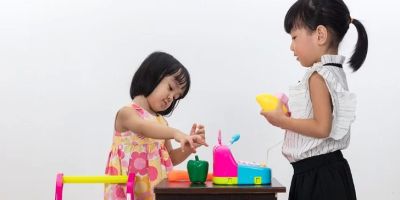How to Organize a Toy Rotation System for Kids
- Why Toy Rotation Is Important
- How to Start a Toy Rotation System
- Strategies for Organizing Toy Rotation
- Benefits of Toy Rotation for Kids
- Practical Tips for Maintaining the System
1. Why Toy Rotation Is Important
For parents looking to minimize clutter and keep their children engaged, a toy rotation system can be an excellent solution. Children often become overwhelmed by an excessive amount of toys, which can lead to boredom and disinterest. Toy rotation offers a way to keep their playtime fresh and exciting, as it allows them to focus on a smaller selection of toys at a time while keeping the rest out of sight.
In addition to fostering a sense of novelty and excitement, toy rotation helps develop organizational skills. When children know that their toys will be rotated and stored, they begin to understand the importance of tidiness and responsibility in their play spaces. Furthermore, rotating toys can also improve their attention span and creativity, as they are encouraged to explore their toys in new ways. By organizing a toy rotation system, parents can enhance both their child's learning and enjoyment.
2. How to Start a Toy Rotation System
Starting a toy rotation system might seem overwhelming at first, but the process can be simple and highly rewarding. To begin, follow these basic steps:
- Assess the toy collection: Start by sorting through your child’s toys. Take inventory of the toys they use most often, as well as those that are rarely touched. Keep in mind that toys with multiple pieces or interchangeable parts often get played with more.
- Group toys by categories: Group the toys into categories based on type, such as puzzles, building blocks, dolls, cars, and creative play toys like art supplies. You can rotate these groups, ensuring that each category has a moment in the spotlight while the others are stored away.
- Designate a storage system: Organize the toys into clear bins or containers. Make sure these are labeled by category or by rotation schedule so that everyone in the family can follow the system.
- Decide on a rotation schedule: Depending on how many toys you have, plan to rotate them weekly or bi-weekly. Be consistent so that your child gets used to the idea that some toys will be available for a limited time and others will return after a while.
3. Strategies for Organizing Toy Rotation
Once you’ve set up the basics of your toy rotation system, consider these strategies to make it even more effective:
- Keep toys out of sight: Out of sight, out of mind! Store toys that are not currently in rotation out of your child’s view to help maintain their excitement and curiosity when they are reintroduced.
- Incorporate seasonal toys: Rotate toys based on the season or upcoming holidays. For example, you can bring out snow-related toys in winter or beach toys in summer. This adds a seasonal excitement to playtime and helps your child stay engaged with the changing seasons.
- Engage your child in the process: If your child is old enough, involve them in the toy rotation process. Let them choose a few toys they’d like to keep out for the week or month, allowing them to have some ownership in the system. This involvement can foster a sense of responsibility.
- Limit the number of toys: Consider limiting the number of toys available during each rotation. Too many toys can overwhelm a child and reduce their ability to focus. A smaller selection encourages deeper, more creative play.
4. Benefits of Toy Rotation for Kids
Implementing a toy rotation system provides numerous benefits for both parents and children. One of the biggest advantages is that it reduces clutter in the home, making it easier to maintain an organized living space. But the benefits for children are even more impactful:
- Increased focus and creativity: With fewer toys available, children are encouraged to use their imagination and engage more deeply with the toys they do have. This fosters creativity and helps develop problem-solving skills.
- Improved organization and responsibility: Toy rotation helps children understand the importance of tidiness and organization. They learn to put away toys and take care of their belongings, which instills important habits that will benefit them throughout life.
- Reduced boredom: When children play with a smaller, rotating set of toys, it gives them the sense of novelty and excitement. They are less likely to become bored with their toys because they know there’s always something new coming around the corner.
- Better sleep habits: With a tidy and organized play area, children may find it easier to wind down after playtime and transition into more restful sleep. A clutter-free environment promotes relaxation and calm.
5. Practical Tips for Maintaining the System
Maintaining a toy rotation system requires a bit of consistency and commitment, but the results are well worth it. Here are some practical tips to keep things running smoothly:
- Stick to the schedule: The key to successful toy rotation is consistency. Stick to the rotation schedule you’ve set, even if it means temporarily taking out toys your child might not use right away. Consistent rotation will keep things fresh.
- Regularly assess toy use: Over time, some toys may become favorites while others are ignored. Periodically review the toy rotation system and adjust it based on your child’s changing interests and developmental stages.
- Incorporate a toy donation system: When it’s time to rotate toys out of the system, consider donating toys that your child has outgrown or no longer plays with. This will keep the collection manageable and teach your child the value of sharing with others.
- Be flexible: While routines are important, sometimes it’s okay to break the rotation schedule. If your child is particularly excited about a certain toy or has a new interest, feel free to change things up and allow them extra time with that toy.
At Knight Toys, we offer a wide range of toys that can be perfect for any toy rotation system. Whether you're looking for educational toys, creative building sets, or action figures, our collection is designed to keep kids engaged and learning while making it easier for parents to manage playtime.





